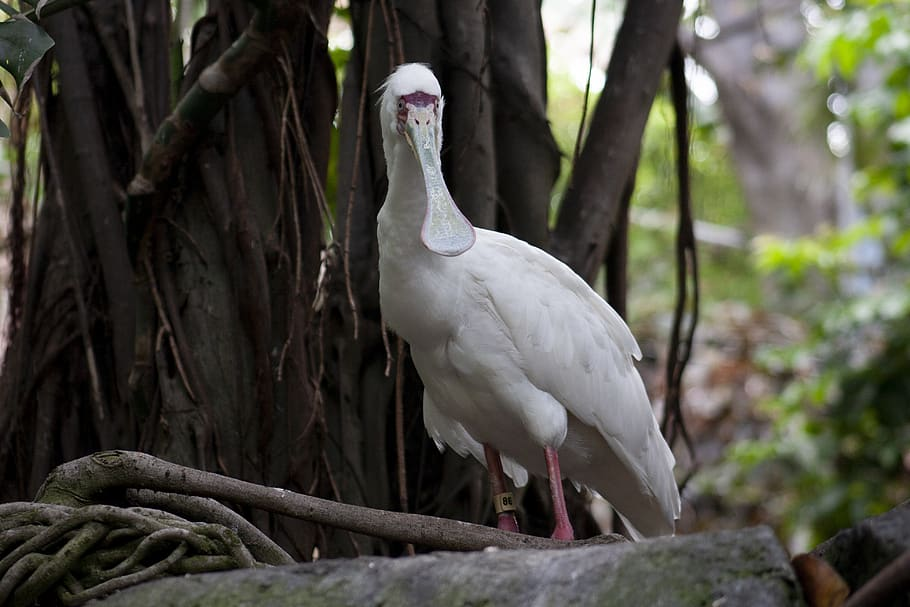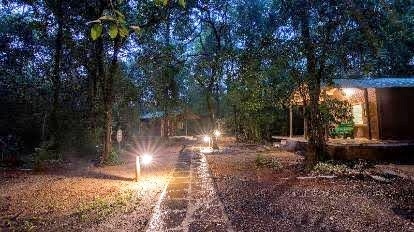Bird watching in the Mangroves.
I went for Mangrove Kayaking and really did not know what it was exactly apart from the fact that Mangroves are trees on an island which grow in water. I had a faint idea that mangroves like Sundarbans existed which had very rich flora and fauna and I had seen the Royal Bengal tiger in the mangroves along with crocodiles on television and thus it was a pretty dangerous area.
It was high
tide and the water from the ocean was coming in towards the river and it was difficult
to paddle against the currents. The water was also very choppy and I felt the
Kayak would overturn any time, but it was very stable and I really had nothing
to fear. I could see the river meeting the sea and it was the Delta Point. So
if I paddled a bit more, I could reach the sea.
We soon
reached a spot which looked like an island with a lot of trees but there was no
land visible as there was water all around, the kayak could easily be navigated
through shallow waters and it is a really sturdy boat and very easy to handle
and paddle through water. I really would not mind buying a Kayak for myself as
I really love it and it is fortunately available in Decathlon Sports Store in
Mangalore. The guide informed me that during low tide it is an island with
visible land and during high tide the water covers all the land. This thing
caught my imagination and I thought about the causes of low tide and high tide
and began wondering how wonderful it would be to have a tree house in a
mangrove.
We got down
from the Kayak and started walking around and in places I could feel stubbles
of grass under my feet and in some places it was very soft sand in which my
feet sank without me losing my balance. It was a dense forest sort of thing and
the guide told us to maintain silence as the ecosystem was not to be disturbed due
to its fragile habitat of rare wildlife which was found only in the mangroves
and included turtles, crabs, birds and fish.
While
walking on the sandbars my mind was filled with fear as the mangroves in
Sunderbans in West Bengal and Bhitarkanika in Odisha had lots of crocodiles. I
was afraid of animals who may sneak underwater and grab my leg. I was also
frightened of stepping on barnacles, as I had met a lot of people with bleeding
feet. The guide however assured me that there were no barnacles or dangerous reptiles
and crocodiles have never been seen in this area.
So in this
beautiful place I saw bats hanging upside down like fruits ready to be plucked
and they created a ruckus when they flew away due to our intrusion into their
space.
Well I saw
a lot of small crabs climbing up the trees. I lazily glided in the Kayak and
looked around and was amazed to see a tree full of huge giant white birds and I
thought they may be common cranes or egrets and herons, but on closer look the
birds were pretty huge and their wing span was as big as my open arms when they
flew away. They had strange beaks and I had never seen such huge beaks and one
had a pointed beak while the other had a sort of flat funny looking beak. I
asked my guide about the bird and he told me that in Kannada the birds were
called “Kokkare” and he did not know the names of the bird in English. I would
have been frightened if I was alone and was immediately assured that they are
peaceful birds who do not harm humans. Seeing the big birds somehow convinced
me that birds had actually evolved from meat eating dinosaurs roughly one hundred
and fifty million years ago in the late Jurassic age.
I started imagining a lot of meteorites bombarding earth and due to the dust the sun could not penetrate the surface leading to global deep freeze as a result of which vegetation and animal life depleted and food became more and more scarce and the big animals had to literally hop, skip and jump from place to place to find food and in the process their size shrank and they developed wings instead of arms. In fact a large asteroid impact 65 million years ago is thought to have contributed to the extinction of about 75 percent of marine and land animals on Earth at the time, including the dinosaurs and created the 300 kilometer wide Chicxulu Crater on Yucatan Peninsula.
Then I was surprised to see the most remarkable bird with a beak which was looking like a spoon or spatula and this huge bird was most aptly named Spoonbill. I immediately fell in love with the bird and wanted to know everything that is there to know about the bird, like where was it born, where does it stay, how big was its nest, what does it eat, what is their intelligence level, what is their family and community life like and how many eggs do they lay in a season, are they monogamous or polygamous, how long and how far can they fly without touching down or landing , when are they visible in Karnataka and if I could see them on my next visit.
I found out that the Eurasian Spoonbill is a migratory bird which breeds in Karnataka and is a close relative of herons, storks, ibises and flamingos. Something like our distant cousins who look different from the immediate family. I found out that they live in a mixed society of different types of birds like ibis, herons, snake birds, egrets and it was known as a mixed heronry.
I saw Ibis
which is a regular guest from Africa and I guess they take advantage of the
monsoon winds to fly over the oceans – but I am yet to find the exact way these
birds migrate.
I saw the
water crow or Cormorant which was known as “Neer Kagai” in Kannada and it
looked like the crow was about to fly but realized that it was holding its wings
open to dry after a dive. It had a longer neck and webbed feet like a duck. The
male bird tries to attract a mate by posturing, wing waving, vocalizing and
zig-zagging across the water, even splashing the surface with the tip of its
wings. These birds are really smart and can dive up to 150 feet deep and use
their webbed feet to propel through water and use their wings as rudders and
they are capable of using tools like rocks to break open the shells of their
prey. It is interesting to see them pursue the fish as it looks like they
literally fly underwater.
The snake
darter was visible in the water, looking like a water snake and was a real
beauty.
I saw a lot
of different types of egrets and herons also and for the first time in my life
felt that it is really worth knowing more about the different types of birds in
detail and watching and photographing them. Making videos and streaming the
live feed from multiple cameras would be something like a reality show like Big
Boss where Contestants called "housemates" live together in a
specially constructed house that is isolated from the outside world. Housemates
are voted out, usually on a weekly basis, until only one remains and wins the
cash prize. During their stay in the house, contestants are continuously
monitored by live television cameras as well as personal audio microphones.
I thought
very deeply about how interesting it would be to telecast "Big Boss Birds" to generate interest and garner
support for wildlife conservation as our planet earth is going through rapid
changes and sooner than we realize all these birds may become extinct.


















Comments
Post a Comment